Health and Productivity Management
Health and Productivity Management Declaration
The greatest assets of NSD are its employees. For each and every employee to fully demonstrate their capabilities and play an active role, they must be physically and mentally healthy and have a fulfilling private life. NSD believes that employee health is a management priority and it strives to establish and maintain a work environment that ensures the health and safety of its employees. Through these initiatives, we aim to achieve the sustainable growth.
Organizational Structure for Health and Productivity Management
The Chief Health & Productivity Management Officer is the president. The top officer responsible for planning and implementing initiatives is the officer in charge of human resources. The Human Resources Department promotes health and productivity management in cooperation with the Medical Healthcare Promotion Department and the NSD health insurance association.
Especially, NSD Health Insurance Association actively supports health promotion of employees and their families in cooperation with the Company. In addition, with the aim of permeating health management, we have established "Health Promotion Meeting" consisting of both managers and non-managers, and by collecting opinions of employees, we are working to smoothly carry out health management measures.
The officer in charge of human resources meets regularly with the Health Promotion Office to discuss policies and measures, and reports the results of implementation of measures and analysis of indicators over time to the Board of Directors and other meeting bodies. The Health Promotion Room (part of the Human Resources Department) engages in health and productivity management across the organization through the efforts of industrial physicians and health nurses, who are healthcare professionals.
In addition, with the aim of instilling the philosophy of health and productivity management, we have established the "Health Promotion Meeting" consisting of both managers and non-managers from our various business units and divisions. By collecting the opinions of employees, we are working to smoothly carry out health and productivity management measures.
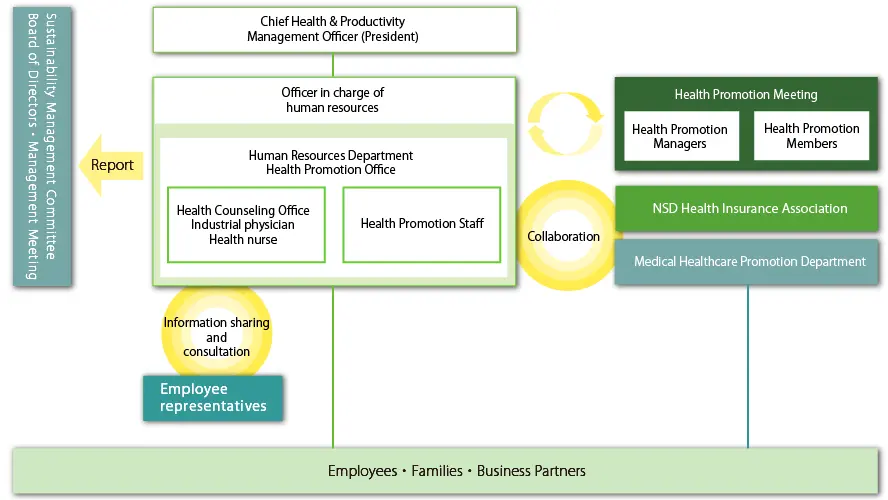
Health and Productivity Management Initiatives
As stated in NSD's Health and Productivity Management Declaration, the goal of health and productivity management is to ensure that each and every employee can fully demonstrate their capabilities and play an active role in order to achieve sustainable growth of the company—or, in other words, to improve employee performance.
NSD have set specific performance indicators and goals and engages actively in health and productivity management from the following perspectives.
- Health promotion and disease prevention
- Balancing work with childcare, nursing care and medical treatment
- Reducing long overtime hours and creating an environment where employees can feel free to take paid leave
Performance Indicators and Targets
Improvement in employee performance is measured using three key indicators—"Absenteeism," "Presenteeism," and "Work Engagement"*—as numerical targets.
- *The terms "Absenteeism," "Presenteeism," and "Work Engagement" mean the following, respectively.
Absenteeism: Absence from work due to health problems.
Presenteeism: A state in which absenteeism is not apparent in terms of attendance management, but productivity is reduced due to health problems.
Work Engagement: A positive and fulfilled state of mind and attitude toward work.
| Performance indicators | Target | FY2021 | FY2022 | |||
|---|---|---|---|---|---|---|
| Achievements | Number of employees surveyed (Response rate) | Achievements | Number of employees surveyed (Response rate) | |||
| Absenteeism | Percentage of employees taking a leave of absence | 1.6% | 1.80% | All employees (100%)1 | 1.70% | All employees (100%)1 |
| Average number of days absent by all employees due to injury / illness or leave of absence | 2.0days | 1.7days | All employees (100%)1 | 2.2days | All employees (100%)1 | |
| Presenteeism | Rank based on Wfun (Work Functioning Impairment Scale)2 | A rank | - | - | B rank | 2,881 (89.4%) |
| Work Engagement | Average of all responses for indicators showing degree of motivation and pride with regard to work3 | 2.4 | - | - | 2.3 | 2,881 (89.4%) |
- 1Data is extracted and aggregated from the attendance system into which all employees enter their attendance data.
- 2Questionnaire developed by the University of Occupational and Environmental Health, Japan, to measure the degree of impairment to labor / work functionality due to health problems.
- 3Calculated using the questions No. 79 "Do you feel energized when you work?" and No. 80 "Do you feel proud of your job of Stress checks conducted for all employees?"
Health promotion and disease prevention
NSD believes the health of its employees is an important management resource, and strives to help improve employees’ lifestyle habits and health literacy to prevent physical and mental illnesses. We drew up "Health and Productivity Management Strategy Map[PDF:112KB]", which clarifies relations between initiatives and effects, and are strategically promoting each measure.
We introduced a health points system * in FY2017 to improve employees' health literacy by supporting them to achieve health goals that they set themselves and providing health information.
Although there was previously an issue with lack of exercise due to work centered primarily around desk work, the percentage of employees walking over 8,000 steps a day and the average number of steps have increased as a result of encouraging exercise using the health points system.
We provide assistance covering some expenses for thorough examinations, cancer screening, and smoking cessation outpatient services to support employees' management of their health.
- *About a health points system
Points are awarded for the registration of health data responses to surveys, participation in walking events, etc using a health app developed by NSD. Points can be exchanged for health goods.
As an in-house event using the health points system, we have held a walk rally that simulates a trip around Japan based on the cumulative number of steps registered in the app since October 2022. In this walk rally, we aim to make walking even more fun through earning souvenirs (local specialties) and points by reaching checkpoints along the route. As a result, both the number of participants and the average number of steps increased compared to before the walk rally, leading to improved employee health.
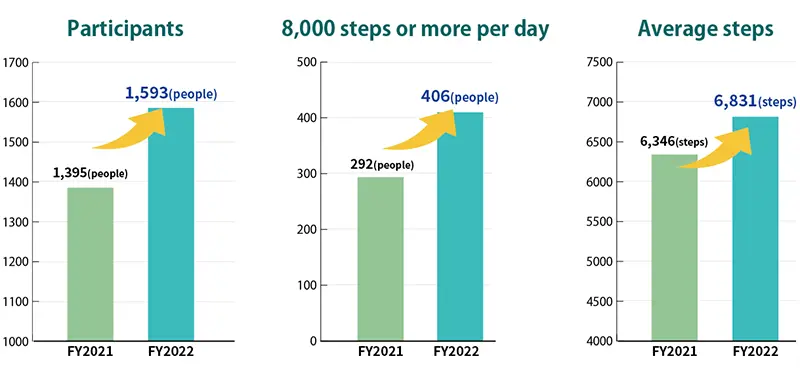
We have also established a consultation system staffed by staff from the Health Promotion Office, providing ongoing follow-up or encouraging employees to undergo more thorough examinations based on the results of health checkups, and face-to-face meetings with employees experiencing a mental health challenge or returning to work from one.
We are also focusing on initiatives to prevent the occurrence of mental and physical illnesses, such as operating a BMI improvement program that provides exercise and dietary guidance to employees with a high BMI, providing e-learning on mental and physical health, and streaming videos on mindfulness*.
Because it will take some time for improvements in lifestyle habits to appear in the results for the ratio of individuals at an appropriate weight and the ratio of those with BMI of 30 or over, we will continue to implement measures to achieve our targets.
- *Mindfulness is a mental state in which a person can concentrate on the "now" without being misled by vague feelings of anxiety or external evaluations. Aiming for a state of mindfulness, learning and practicing skills such as meditation is believed to reduce stress and improve work performance, and it also applies to business situations.
| Number of participants | Employee satisfaction1 | |
|---|---|---|
| Health points system2 | 1,593 | 95.0% |
| BMI improvement program3 | 43 | 51.5% |
| Mindfulness video viewers | 326 | 78.3% |
| E-learning on physical and mental health | 3,354 | - |
- 1Percentage of internal questionnaire respondents who answered that they were "Very satisfied" or "Satisfied"
- 2The total number of health points granted in FY2022 was 10,677,197 points (1 point = 1 yen conversion)
- 3Calculated from October 2021 through September 2022 as FY2022 measures
| FY2021 | FY2022 | Target | |
|---|---|---|---|
| Percentage of employees receiving regular health checkups | 100.0% | 100.0% | Keep 100.0% |
| Percentage of employees receiving thorough examinations | 80.0% | 76.3% | 85.0% |
| Percentage of female employees receiving a gynecological checkup4 | 90.3% | 91.5% | 95.0% |
| Percentage of employees who smoke | 21.1% | 20.8% | 20.0% |
| Percentage of employees who habitually exercise5 | 15.1% | 17.6% | 25.0% |
| Percentage of employees who walk 8,000 steps or more per day6 | 20.9% | 25.3% | 30.0% |
| Percentage of employees who get sufficient sleep | 64.5% | 62.5% | 70.0% |
| Percentage of employees who habitually drink7 | 14.9% | 16.8% | 14.0% |
| Percentage of employees whose weight is in a healthy range8 | 63.2% | 62.7% | 65.0% |
| Percentage of employees whose BMI is 30 or more | 7.2% | 7.2% | 7.0% |
| Percentage of employees participating in health guidance by public health nurses9 | 58.1% | 73.6% | 80.0% |
| Percentage of high-risk patients continuing their treatment10 | - | 100.0% | Keep 100.0% |
| State of health literacy11 | 74.6% | 70.2% | 75.0% |
- 4Percentage of female employees undergoing complete medical checkups who underwent cervical cancer or breast cancer screenings
- 5Percentage of employees who exercise two days a week for 30 minutes or more
- 6The Exercise and Physical Activity Guide for Health Promotion of the Ministry of Health, Labour and Welfare recommends walking 8,000 steps a day. NSD has set this same target. (Figures calculated based on step count data linked to the health app developed by NSD.)
- 7Percentage of employees who drink occasionally or every day and drink an amount of alcohol equivalent to 360 cc of sake (rice wine) or more per day
- 8Percentage of employees whose BMI is 18.5 or more and less than 25
- 9Percentage of employees with at least on item listed as "observation required," "reexamination," "thorough examination," "treatment required," or "undergoing treatment" in their health checkup results who participated in a face-to-face meeting with a public health nurse
- 10Percentage of employees who were advised by a public health nurse to visit a medical institution and who actually visited a medical institution
- 11Percentage of internal questionnaire respondents who answered "Yes" to the question "Is there anything you consciously do to maintain or prevent deterioration of your mental and physical health?"
In the area of mental health, we have conducted line care and self-care training to improve the knowledge of employees, with the goal of early detection of mental disorders, so that each and every employee can fully demonstrate their capabilities and play an active role.
Through such training, we educate employees about how to deal with stress and share information on consultation desk services, and provide managers with correct knowledge about mental health, such as signs of subordinates' mental health issues and timing of consultations with the Health Promotion Office.
As a result of these efforts, the number of high-stress patients is decreasing. Since FY2022, we have been working to enhance our early detection of mental health challenges, with early-stage detection rate as one of our key indicators.
| FY2021 | FY2022 | |
|---|---|---|
| Percentage of employees undergoing a stress check | 88.3% | 89.4% |
| Target | FY2021 | FY2022 | |
|---|---|---|---|
| Percentage of employees undergoing a stress check12 | 10.0% | 12.4% | 11.5% |
| Rate of early-stage detection of mental health challenges13 | 45.5% | 15.4% | 33.3% |
- 12Percentage of employees who have strong subjective symptoms whose stress is due to very serious causes and who have very inadequate support (according to the standards of the Ministry of Health, Labour and Welfare)
- 13Percentage of employees on the first long-term leave who submitted a medical certificate (started leave) on or after the eighth day after consultation
Balancing work with childcare, nursing care and medical treatment
NSD is striving to build a work environment where employees can continue to work while raising children, caring for family members, and being treated for diseases, aiming to diversify ways of working and promote the achievement of a healthy work-life balance.
We provide more childcare leave than required by laws or regulations and has created a system where employees who have a child who is in the 6th grade of primary school or younger children are allowed to work shorter working hours. We also help employees taking childcare leave return to work and provide information to them. We have established a corporate culture where employees can feel free to take childcare leave and NSD follows up with them when they return to work. Male employees are encouraged to take accrued leave to care for their children. As a result, the percentage of male employees taking childcare leave has increased. Our target is more than 50% of male employees taking childcare leave. The percentage of female employees taking childcare leave has been 100% since FY2000, when we began taking this statistic.
We have also created a system where employees can balance work and caring for family members by taking leave or working shorter hours. Industrial physicians and public health nurses counsel employees who are being treated for cancer, cardiac diseases, or brain diseases and share information with their bosses. In this way, we help employees being treated for a medical condition balance treatment and work.
We have developed a system where employees can feel free to receive counseling. We have established an internal work-life balance consultation desk and a consultation desk where external experts counsel employees.
As a result of improving work environment, the percentage of women among all employees continues to rise as well as the average length of service continues to rise for both men and women.
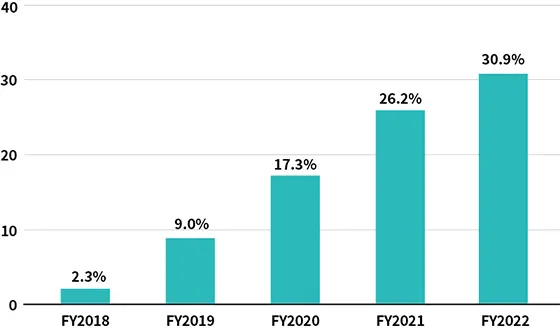
- *Percentage of employees taking childcare leave: Male employees who took childcare leave from April to the following March / Male employees who had new children during the same period
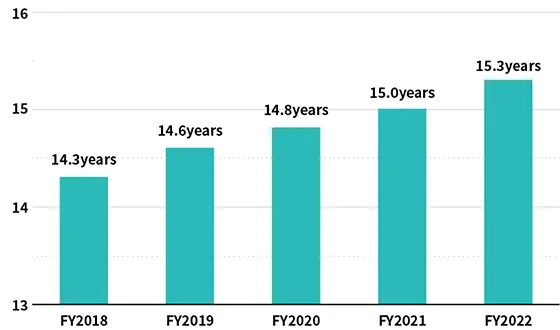
Reducing long overtime hours and creating an environment where employees can feel free to take paid leave
NSD believes that we can strengthen our management foundation by establishing an employee-friendly workplace environment where employees can work while maintaining their health. This enables us to secure good human resources and it increases the productivity of each employee. We aim to achieve average overtime hours of 20 hours or less and and employees taking 75% or more of their paid leave. We strive to reduce overtime hours and create an environment where employees can feel free to take paid leave.
We allow employees to take half-day leave and take leave by the hour. We also provide leave for meritorious long service. We provide a variety of leave options so that each employee can take leave flexibly in ways that are convenient for them.
We are striving to reduce overtime hours by strengthening management— that is, by providing training to managers and increasing the percentage of PMP-certified employees.
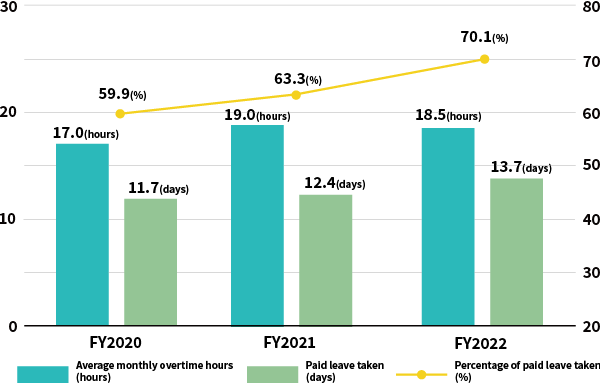
Outside Evaluation of Our Health and Productivity Management Initiatives
NSD has received the following certifications.
2024 Health and Productivity Stock・
2024 Certified Health and Productivity Management Outstanding Organizations (Large Enterprise Category/White 500)
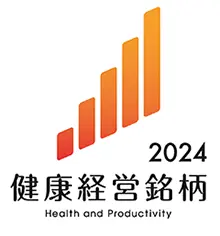

We have been selected as "2024 Health and Productivity Stock" and recognized as "2024 Certified Health & Productivity Management Outstanding Organizations (Large Enterprise Category/White 500)".
Kurumin Mark
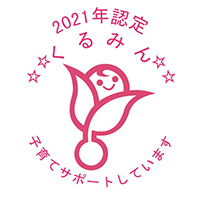
NSD has received Kurumin mark certification, which certifies companies that actively help employees balance childcare with work, from the Ministry of Health, Labour and Welfare, four times in a row: in 2008, 2013, 2016, and 2021.
Corporate Declaration of Health and Productivity (Silver Certification)

Since 2018, we have been certified as a health and productivity organization by the Tokyo Federation of the National Federation of Health Insurance Societies for making a corporate declaration of health and productivity and for actively engaging in health initiatives.
Sports Yell Company*1 and Tokyo Sports Promotion Company*2
Since 2020, we have been certified as a Sports Yell Company and a Tokyo Sports Promotion Company for three years in a row, having been praised for our active efforts in promoting exercise with the goal of having employees able to be active with good mental and physical health.
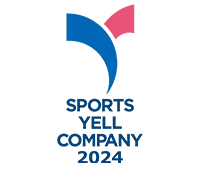
- *1Sports Yell Company: a certification program created in 2017 by the Japan Sports Agency to back companies working to support and promote sports activities aimed at improving employee health
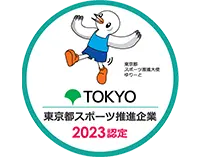
- *2Tokyo Sports Promotion Company: a program by the Tokyo Metropolitan Government to certify companies engaged in initiatives to promote employee sports activities and in social action in the field of sports
Health and Productivity Management Support for Business Partners
In August 2023, we held a free online seminar for our partner companies, introducing examples of our efforts, and a hands-on mindfulness experience. We plan to hold similar seminars regularly in the future.
We also provide additional support for our business partners by providing information on health and productivity management initiatives.
Occupational Health and Safety
NSD has established the Occupational Health and Safety Committee, which manages occupational safety, takes steps to improve the work environment, and carries out health management.
In addition to efforts to identify hazards and assess risks at business sites through monthly workplace inspections by industrial physicians, the committee also works to reduce overtime and monitors how many days of paid vacation are taken, assists with the health exam workflow, and addresses employees’ mental health challenges.The results of monitoring overtime work and paid vacation are shared throughout the company via the Occupational Health and Safety Committee and made known to employees during training on health advancement and ways to reduce working hours.
In FY2022, there were five occupational accidents, all of which were due to injuries while commuting. The Occupational Safety and Health Committee is issuing warnings with the aim of achieving zero occupational accidents going forward.